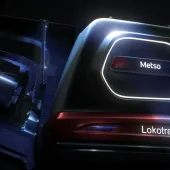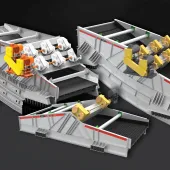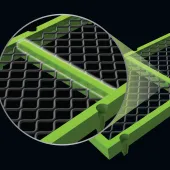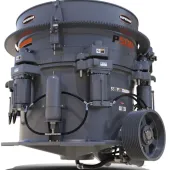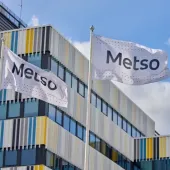MAJOR continue to deliver enhanced screening solutions

Company optimizes Flex-Mat performance with improved crown curve calculation
MAJOR, a leading global manufacturer of high-performance screen media, have introduced a new crown curve calculation and updated crown curve adaptors. The latest developments are said to offer customers even greater performance from the Canadian company’s tensioned Flex-Mat high-vibration wire screens and other screening media products originally designed for modular panels.
According to Lars Bräunling, MAJOR director of product technology, having the right curve on the screen deck will allow producers to tension the screen media correctly, which is vital to maximum performance and wear life.
He commented: ‘We are dedicated to our customers’ screen performance and profitability, which is why we are continually making improvements to our screening media products. The crown curve updates will help maximize the screening capabilities of our innovative Flex-Mat high-vibration wire screens and contribute to a low cost-per-tonne productivity for our customers.’
MAJOR’s crown curve adaptors allow producers to modify a flat vibrating screen deck for use with tensioned screen media and to trial tensioned media without the time and expense of a deck conversion. The update is a response to dealer and end-user feedback in relation to the overall depth of the curve and its impact on material flow.
The changes optimize the performance of MAJOR’s tensioned screen media, notably the company’s flagship Flex-Mat wire screens, setting a new standard in performance for aggregates and mining producers. The innovative product’s high frequency movement helps make the media an active part of the screening process, improving efficiency compared with static media such as woven cloth and synthetic panels.
MAJOR bonds Flex-Mat’s wires with high-density polyurethane strips instead of weaving them. This allows wires to vibrate independently from hook to hook under material contact. The high frequency of the wires, at 8,000 to 10,000 cycles per minute, adds to the vibration of the screen box (800–900 cycles per minute) which speeds up material separation and passing.
MAJOR say these features improve material throughput while virtually eliminating near-size pegging on the top decks and fine material blinding and clogging on the bottom decks, reducing the overall cost of production. The company added the screen media provides up to five times longer wear life than traditional woven wire.
The improved service life and minimized screening issues means less downtime is spent cleaning/replacing screen media, delivering a lower cost per tonne and improved profits. It also allows cleaner retained material through the middle decks and less risk of material contamination.



